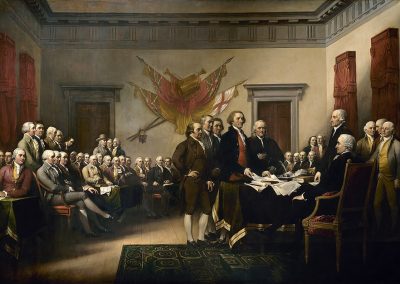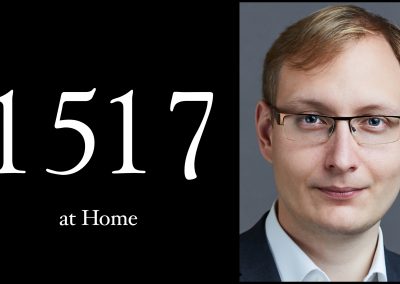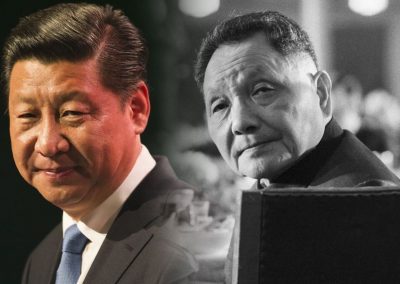
On the Loss and Preservation of Knowledge
This is an excerpt from the draft of my upcoming book on great founder theory. Learn more here.
Let’s say you are designing a research program, and you’re realizing that the topic you’re hoping to understand is too big to cover in your lifetime. How do you make sure that people continue your work after you’re gone? Or say you are trying to understand what Aristotle would think about artificial intelligence. Should you spend time reading and trying to understand Aristotle’s works, or can you talk to modern Aristotelian scholars and defer to their opinion? How can you make this decision? Both of these goals require an understanding of traditions of knowledge — in particular, an understanding of whether a tradition of knowledge has been successfully or unsuccessfully transmitted. But first: what is a tradition of knowledge?
A tradition of knowledge is a body of knowledge that has been consecutively and successfully worked on by multiple generations of scholars or practitioners. In talking about a tradition of knowledge, we may be talking about a philosophical school of thought, or perhaps a tradition of intricate rituals in a religion, or even something as humble as the knowledge of how to fashion the best wooden toy horse, passed down from one craftsman to another. In the contemporary world, it may include something like the tacit knowledge of how a codebase really works, which senior engineers teach to junior engineers. It is useful to classify traditions of knowledge into three types: living, dead, and lost traditions.
A living tradition of knowledge is a tradition whose body of knowledge has been successfully transferred, i.e., passed on to people who comprehend it (e.g., cryptography). The content of the tradition’s body of knowledge does not have to be strictly or fully accurate for the tradition to be living; it merely needs to be passed on.
A dead tradition of knowledge is a tradition whose body of knowledge has been unsuccessfully transferred, i.e., its external forms, its trappings such as written texts have been transferred, but not the full understanding of how to carry out this tradition of knowledge as practiced (e.g. scholars who can recite Aristotle but can’t use arguments as he did; Buddhist monks who chant the instructions to meditation rather than meditating). This means a tradition can be dead while people still read its texts.
A lost tradition of knowledge is a tradition that has not been transferred at all (e.g. numerous schools during the Hundred Schools of Thought period in China; the theology of the Cathars, which is only preserved in the words of their critics, etc). The people who had the knowledge died without leaving any successors or substantial record of their knowledge.
It can be difficult to distinguish between different traditions of knowledge. There are traditions within traditions, and there are traditions that become fellow travelers, in the sense that they are related to but merely adjacent to one another. There are also traditions that have a long history of arguing against each other. Perhaps the best example of such traditions are to be found in the realm of theology: the multitudinous schisms between and within the major branches of Christianity, such as the intra-Protestant debate between Calvinists and Arminians which began in the 16th-century Netherlands and continues to this day among some evangelicals; the centuries-long debate began in the 3rd century AD between the dominant Vaibhāṣika school of Buddhism and its successor faith of Sautrāntika in the patchwork of northern Indian states following the fall of the Mauryan Empire; and the infamous warring between Sunni and Shia Islam. We can find other examples in political thought: the ancient debates between Confucians and Legalists in China, the enemy factions of Anglo-American liberalism and conservatism, and the debate between the Originalist and Living Constitutionalist schools in American constitutional interpretation, to name a few.
It matters whether a tradition of knowledge is living or dead. This is obviously the case if you are starting a research program — you want the tradition you start to stay alive. Whether or not the Aristotelian tradition is dead also matters if you are trying to understand what Aristotle would have thought about artificial intelligence: it determines whether or not you can trust the “authorities” on Aristotle — if the tradition is dead, then their expertise will not be helpful to you. It also matters if a tradition of knowledge is lost: this will inform your understanding of what it is possible to know about that tradition. For now, we will focus on understanding how to distinguish between a living and a dead tradition. This can be tricky; it’s hard to trace traditions of knowledge, so it’s also hard to notice when they die.
How can you tell whether a tradition of knowledge is living or dead? First, you have to be able to identify signs that indicate the existence of a tradition of knowledge. You have to be able to recognize signs that indicate the existence of a tradition at all, then determine whether those signs taken together indicate that the tradition is dead or that it is alive. The signs used to recognize the existence of a tradition are the same signs used to distinguish between living and dead traditions.
Signs of Traditions of Knowledge
Signs that indicate the existence of a tradition of knowledge vary in the degree to which they indicate that a tradition is alive — that understanding has been passed on. A collection of signs that weakly or do not at all indicate continuity of understanding, without any signs that strongly indicate continuity of understanding, is a sign that the tradition under investigation is dead. Below are some common signs.
| Sign of tradition of knowledge | Example of this sign |
| Production of a notable effect | Powerful generals; well-balanced Damascus steel swords |
| Shared methodology (even if not explicit) | Plasmid transfection techniques in synthetic biology. |
| Shared concepts (even if under different name) | “Diagonalization argument” or “Yao’s minimax principle” in mathematics. |
| Shared conceptual framework or theories | The Standard Model in contemporary particle physics. |
| Extension of the theory in the tradition | Mencius’ work on Confucian philosophy. |
| Master/apprentice relationships | An apprentice signing up with a master stonecutter for several years of service. A master glassmaker in his old age supported by his former apprentice. |
| Explicit knowledge of specific arguments | The argument that it is naive to try and predict the effects of economic policy entirely on the basis of relationships observed in historical data is known as the ‘Lucas critique’ in economics. |
| Shared terminology | A surgeon might use the terms “proximal” and “distal” to describe locations on the human body. |
| Accreditation system (depends of health of institution) | An MIT program that awards graduates PhDs in biochemistry. |
| References to specific authors | Mathematicians sometimes recommend ‘reading Artin’ for algebra. |
| Familiarity with a person’s works | A classicist can recite verses from Homer’s Iliad. |
| A physical location where the tradition is ostensibly kept | University of Oxford campus. The Orthodox Christian monasteries of Mount Athos. |
Figure: Signs of traditions of knowledge. These are listed roughly in order from best to worst indicators of a living tradition.
It’s important to remember that in order to trace traditions, you have to investigate the actual transfer of knowledge. This means that you can’t, for example, rely on the existence of a physical location where the tradition is supposedly kept to justify that the tradition is alive. There are many possible scenarios in which a tradition has died or been lost, and yet the physical location of its origin has been preserved. A useful way of determining whether a tradition of knowledge exists and is living is by investigating chains of master/apprentice relationships. When looking at the works of masters and apprentices, you can tell whether there are shared methods, concepts, ideas, and so forth.
Furthermore, the existence of master-apprentice relationships at all is an indicator of a living tradition, because master-apprentice relationships are especially effective means of knowledge transfer. This is borne out by the historical record. For example, Kongō Gumi, the world’s oldest continuously-operating company and a family-owned construction firm based in Osaka, Japan, has extensively used the practice of mukoyōshi—by which a son-in-law is formally adopted into the family as an apprentice and eventual company owner—to stay in business since the year 578.
Live Traditions
What keeps a tradition of knowledge alive? First, let’s review our definition of a living tradition of knowledge: a living tradition of knowledge is a tradition in which either its founders are still alive and practicing, or its body of knowledge has been successfully transferred, i.e. passed on to people who comprehend it. There are multiple features of a living tradition that we can look for in order to determine whether a tradition of knowledge is alive or dead.
Transfer of Verification Mechanisms
Scholars and practitioners in a body of knowledge will often use discrete techniques or mechanisms to verify their work for accuracy. This is, essentially, a form of quality control that allows new work in a tradition of knowledge to be verified against reality. Whether it’s an oral examination at a medieval university, Napoleon riding into camp unannounced to review the troops, or a surprise internal performance review at the office, the principle is the same.
Transfer of Mechanisms for Correcting Transmission Errors
In addition to verifying new work for accuracy, it is also important to check new work for consistency with a previous or original body of work in a tradition. Errors in transmission from one generation to the next are almost guaranteed and thus require proactive measures to correct them and maintain the fidelity of a tradition—as fastidious Torah scribes, who will restart an entire scroll if they make a single error, can attest.
Transfer of Generating Principles
While there are mechanisms that can be used to check your work, it is also possible to transfer the principles that generated the tradition of knowledge in the first place. Someone who understands the generating principles of a tradition will be able to verify or check their knowledge, but, more importantly, they will also be able to extend it while remaining faithful to the original body of knowledge. An example of a generating principle is a technique for theorizing, such as the process of deductive reasoning.
Explication of Generating Principles
Generating principles must be passed down from one generation to the next implicitly, if they are to be truly transferred and understood. This is because the production of knowledge, in the limit, is almost always too difficult to put into words. Furthermore, not all knowledge is purely linguistic. However, in the absence of an ability to transfer generating principles implicitly, it is also possible to make a praiseworthy and useful attempt to transfer generating principles explicitly. The philosopher Mortimer Adler’s 1940 book How to Read a Book could be considered an attempt at explicating a generative principle—namely, how to read well!
The Production of Masters
A living tradition is able to produce masters of the tradition of knowledge, ideally, both reliably and frequently. Here we might contrast a master of a tradition of knowledge with a student, teacher, mediocrity, or even a mere expert. A master is most likely to be able to preserve, understand, extend, or reconstruct a tradition as necessary.
The Production of Reliable Teachers
While a living tradition of knowledge should be able to produce masters, it will necessarily produce far more teachers. While a master may be key for reconstructing or extending a tradition of knowledge, it will be necessary to have teachers who will primarily solve the counterfeit understanding problem (see below).
An Institution
A tradition of knowledge, like any successful effort involving many individuals, will require an institution in order to maintain and repair itself. This institution will need a great founder to found it. It will need to solve the succession problem. It will need to be periodically repaired by live players. It will have to deal with all the problems any other kind of institution must grapple with, such as setting up defenses against the destruction or capture of the institution by unaligned outside forces. While an institution’s maintenance of a tradition of knowledge is distinct from the tradition of knowledge itself, it is often the case that one institution is mostly or overwhelmingly responsible for the maintenance of a tradition of knowledge and, when the institution fails, it becomes exceedingly difficult or impossible to preserve the tradition.
Remember: traditions of knowledge are preserved intentionally. It’s hard to keep a tradition of knowledge alive.
Dead Traditions and Counterfeit Understanding
The overwhelming odds are that traditions become lost or die. Decay is the default; entropy usually prevails. As a consequence, the number of problems related to transferring a body of knowledge is significant. Any one or combination of these can cause a tradition of knowledge to die.
Students of a tradition can appear to possess understanding of a tradition’s body of knowledge despite actually lacking it. This is counterfeit understanding. This can happen if students merely reproduce the teacher’s statements without understanding the underlying knowledge, or are simply cheating. This can also happen if teachers cannot correctly assess whether the students have achieved real understanding.
Some types of knowledge are particularly vulnerable to counterfeit understanding, such as knowledge about introspection, which is quite difficult to verify. Even types of knowledge that we might think are robust to counterfeit understanding may not be. Don’t make the mistake of thinking that institutions that produce material effects, for example, have an easier time transferring knowledge—it is probably easier to teach someone to be a Little League baseball coach than it is to teach them to carve a totem pole or manufacture a precision machine tool. There are a number of sub-problems that exacerbate the problem of counterfeit understanding:
Standardized Education
Standardized education is useful because, among other things, it is easily scalable, but standardized methods of education (e.g. standardized tests as a means of assessment rather than non-standardized evaluations by masters) tend to produce counterfeit understanding because education is too complex to be easily standardized. This problem is closely related to Goodhart’s Law, which states that “when a measure becomes a target, it ceases to be a good measure.” After a while, test scores no longer reflect general ability, but rather skill at test-taking. To prevent this from happening, any successful system of standardized education would need masters to switch up the standards every now and then, to keep testees on their feet and ensure they could not meet standards with counterfeit understanding.
Purported Change of Purpose
Sometimes counterfeit understanding will be concealed by hiding the resulting loss of capacity as change of purpose. If a country has failed to keep the knowledge of how to make swords alive, for example, they might conceal it by saying, “We don’t need to make swords! The style of combat has changed to favor spears.” If the tradition is dead enough, they might keep saying this until they are thoroughly conquered by sword-users.
Difficulty Recognizing Mastery
Being able to tell whether people have true or counterfeit knowledge is a difficult skill. Even a master in the tradition’s knowledge itself may lack this ability. This is related to the problem of assessing introspection. Humans are, quite simply, not telepaths, and it is difficult to know with certainty or fidelity what is actually going on in someone’s head. Consider, for example, the rise of deconstructionist theory in the Western academy. The current generation of professors that teach this theory to students by and large lacks the intimate knowledge of the structures to be deconstructed which founders of the theory such as Deleuze possessed, and thus while students appear to be aping the forms of the old postmodern theorists, the underlying tradition of knowledge has in reality died.
Death of Implicit Models
People who don’t understand the distinction between implicit and explicit models, and who thus can’t or don’t transfer their implicit models, will fail to transfer the actual body of knowledge—unless the entire body of knowledge has been successfully made explicit, which is exceptionally difficult, if not impossible. For example, a craftsman may think he is transferring knowledge by writing down the instructions for how to fashion a particular type of wooden toy horse, but may not realize that the pressure he applies with his tools is as important as the motions he traces.
Lost Generators
If the generating principles of a tradition’s body of knowledge are not transferred, then students of this tradition won’t be able to re-generate knowledge that has been lost, or generate new knowledge that builds upon the tradition. Barring perfect knowledge transfer by every generation, which is extremely difficult if not impossible, this will result in the decay and eventual death of the tradition.
Syncretism
Syncretism, or the amalgamation of different schools of thought, is a moderately negative sign that people may be failing to transfer a tradition of knowledge. While syncretism is fine if it is an upgrade to the tradition, it is often difficult to tell if it yields an upgrade. There are three cases in which syncretism indicates a dead tradition: first, if people are trying to import something into a system that doesn’t make sense; second, if people are importing things because the original tradition has stopped making sense to them; and finally, if the institution which has served to transmit the knowledge has been captured (see below). Examples of syncretism abound in history, whether considering the traditional amalgamation of Shinto and Buddhism in Japan, the common practice of identifying foreign gods with one’s own in antiquity, and much more besides. What syncretism signifies for a tradition of knowledge is itself a difficult question that must be answered specifically for each instance.
Single Points of Failure
Although creating an institution dedicated to transferring a tradition of knowledge is very useful, and is necessary to preserve a tradition in the long run, it can also be dangerous. By institutionalizing a tradition, you can also introduce single points of failure. The bad judgment of one teacher at an organization, for example, can yield a whole class of students whose thought is severely damaged. One may attempt to lessen this problem through institutional redundancy, establishing multiple centers of knowledge to independently and mutually verify each other’s work; but maintaining such a subtle dance of coordination between multiple institutions becomes a skill in need of transfer in its own right, and this greatly increases the risk of schisms.
Institutional Capture
If an institution built to transfer a tradition of knowledge gains power or prestige, it will attract people who want to use the institution for other purposes than the preservation and development of the tradition. Once the institution is captured for the power it holds, and the goal of the organization is no longer to transfer the tradition, the body of knowledge can easily fail to be transferred. Some types of knowledge are extremely vulnerable to institutional takeover, e.g. traditions involving political theory, because every social theory is also an ideology.
There are various ways to defend a tradition from death by institutional capture. One way is simply to understand the tradition — it’s much easier to defend it if you understand it, because others can’t distort it while you’re unaware. Another way is to tie resources to the propagation of the tradition, for example, by dedicating a grant to fund people who only work on certain texts. Implementing these defenses, however, is tricky. If you overdo the defense mechanisms, they may prevent the successful transfer of knowledge. You can imagine a grant tying people to a particular work being detrimental if actual understanding is achieved by reading a different work, and there is no financial incentive to read that work. On the other hand, if you underdo the defense mechanisms, and the institution is captured, the tradition will die just the same.





